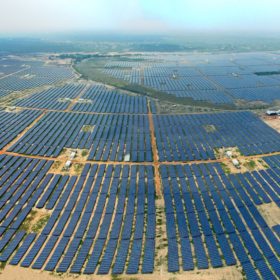Indian solar glass maker’s revenues soared 85.4% in FY2020-21
Despite a Covid-hit first quarter, Borosil Renewables registered a strong growth in annual revenues driven by record sales and high price realizations in the fourth quarter.
India deployed 2.05 GW solar in first three months of CY2021
Solar installation surged in the first quarter of 2021, with developers completing their delayed projects from last year.
IEA highlights solar’s dependence on Chinese copper processing
The sheer volume of new power lines which will be required to accommodate the rising tide of solar installations ensures copper has been included by the International Energy Agency on its list of minerals which must keep flowing if the energy transition is to stay on course. And it’s not production that’s the potential bottleneck.
JSW’s steel production dips as it prioritizes medical oxygen supply
The company’s capacity utilization was 5% lower than in March as it prioritized medical oxygen supply over augmenting steel production.
Green taxonomy first step towards building a resilient society
The second wave of Covid-19 reminds us to build a resilient society. Climate Change, not unlike Covid-19, will deliver devastating effects to our planet and disrupt our way of life. So, in this climate decade, India must channel investments into sustainable activities. The first step is to construct a robust “green taxonomy” – a green list of sustainable activities.
Covid impact: Solar imports dipped 75% in ten months
Coronavirus disruption has been cited as the chief culprit as imports from China, Thailand and Vietnam slumped from April to January, but safeguarding duty also appears to have had an impact, with unaffected imports from nations such as Myanmar, Chad and Russia on the rise and Malaysian trade keeping steady.
Indian trough highlighted by Chinese solar glassmaker
Xinyi Solar has posted bullish annual figures on the back of an astonishing rebound in the global market following Covid travails at the start of 2020. There is one national market, however, which has not been invited to the party.
JMK says India could install 9.7 GW of new utility-scale solar in 2021
The nation is going to make great strides in new utility-scale solar installation this year after adding just about 2.6 GW in 2020.
India-US climate ties must prioritize green transition finance
A new report says the United States and India have an opportunity to partner to catalyze foreign institutional investment in India’s green transition. It lays out what such a partnership should look like and how it would benefit both countries and the world.
India added 1.4 GW of solar in October-December period
The new solar capacity addition during the third quarter of FY 2020-21 was way above 928 MW installed in the previous quarter (July-September).













